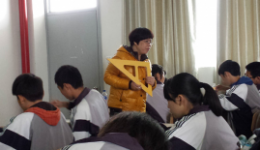
1.介词和种类
(1) 简单介词,常用的有at, in, on, about, across, before, beside, for , to, without等。
(2) 复合介词,如by means of, along with, because of, in front of, instead of等。
2、介词和其他词类的习惯搭配关系
(1) 和动词的搭配,如agree with, ask for, belong to, break away from, care about等。
(2) 和形容词的搭配,如afraid of, angry with, different from, good at
(3) 和名词的搭配,如answer to , key to, reason for, cause of, visit to等.
3.介词短语在句子中的作用:
(1) 作定语 I know the answer to the question .
(2) 作状语 The children are playing football in the playground .
(3) 作表语 Mike is in the garden .
(4) 作宾补语 He found himself in the middle of the mountain .
(5) 作主补语 Tom was seen inside the classroom .

4、 常考介词的意义与用法区别
(1) at, on, in(表时间)
表示时间点用at,如at five o’clock, at night等;表示不确定的时间或短期假日也用at,如at that time, at Christmas等。
指具体的某天用on, 如on Monday, on the end of December, 指某天的朝夕用on,如on Friday morning等。
长于或短于一天的时段(月份,年份等)用in,如in the evening, in April, in Spring, in 2017等。
(2) between, among(表位置)
between仅用于二者之间,但说三者或三者以上中的每两个之间的相互关系时,也用between, 如
I’m sitting between Tom and Jerry.teacheray.com
The village lies between three mountains.
among用于三者或三者以上之间。如:
He is the best among the students.
(3) beside, besides
beside意为”在…旁边”,而besides意为”除…之外”(包括所除对象)。如:
He sat beside me.
What do you want besides this?
(4)in the tree, on the tree
in the tree 指动物或人在树上,而on the tree 指果实、树叶长在树上
(5)on the way, in the way, by the way, in this way
on the way 指在路上 in the way 指挡道
by the way 指顺便问一句 in this way 用这样的方法
(6)in time, on time
in time 及时 on time 准时
(7)besides, except
besides 除…以外(包括所处对象)
Besides Tom, other students went to cinema.
except 除…以外(不包括所除对象)
All the students went to central park, except her.
(8) on, in, to 表示位置关系时
on 表示相邻且接壤的两个地点
in 表示一个地点在另一个地点的里面,包含关系
to 表示相邻但不接壤的位置关系
原创/安颖/北京市西城区英语教师,欢迎关注我的微信公众号teacheray,一起交流英语学习。
转载注明版权地址
http://www.teacheray.com






